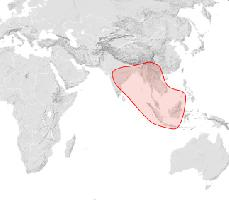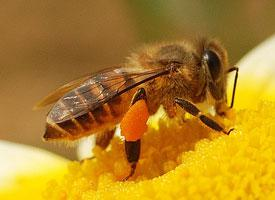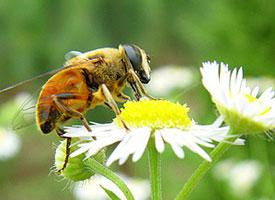
Statut de conservation
| Menacé |
Description de l'animal
The Black Dwarf Honey Bee, scientifically known as Apis andreniformis, is a fascinating species of honey bee that is predominantly found in the dense, tropical forests of Southeast Asia, including countries such as India, Thailand, Malaysia, Indonesia, and parts of China. This species is one of the smaller members of the Apis genus, a characteristic that, combined with its unique behaviors and adaptations, makes it an intriguing subject of study in the world of entomology.Physical Characteristics:
Apis andreniformis is notably smaller in size compared to its more well-known relatives, such as the Western honey bee (Apis mellifera). Adult workers typically measure about 7 to 10 mm in length. One of the most distinguishing features of the Black Dwarf Honey Bee is its dark coloration, which ranges from black to dark brown, often with lighter brown bands on the abdomen. This darker pigmentation is thought to aid in thermoregulation, allowing the bees to maintain an optimal body temperature in their tropical environment.
Nesting Behavior:
Unlike many other honey bee species that build exposed nests, the Black Dwarf Honey Bee prefers the protection of the forest's dense canopy. They construct small, single-comb nests that are often attached to the thin branches of trees or underneath overhangs. These nests are relatively open, making them unique among honey bees, as they lack the protective cover of a beehive. The choice of nesting sites reflects a balance between predator avoidance and temperature regulation.
Foraging and Diet:
Apis andreniformis exhibits remarkable foraging behavior, with workers venturing out during daylight hours to collect nectar and pollen from a variety of flowering plants. Their smaller size allows them to pollinate flowers that might be inaccessible to larger bees, playing a crucial role in the biodiversity of their ecosystems. The nectar and pollen collected are converted into honey and bee bread, which serve as food reserves for the colony, particularly during the rainy season when foraging opportunities are limited.
Social Structure:
The social structure of Apis andreniformis colonies is similar to that of other honey bees, with a clear division of labor among the queen, workers, and drones. The queen is the sole egg-layer in the colony, while the workers perform various tasks such as foraging, nest maintenance, and care of the young. Drones, or male bees, have the primary role of mating with a virgin queen to ensure the continuation of the colony's lineage.
Conservation Status:
The Black Dwarf Honey Bee plays a significant role in the pollination of wild flora in its native habitats, contributing to the health and diversity of tropical ecosystems. However, like many bee species worldwide, it faces threats from habitat destruction, pesticide exposure, and climate change. Conservation efforts are crucial to protect this species and its habitat to ensure the ecological services they provide are not lost.
In conclusion, the Black Dwarf Honey Bee, Apis andreniformis, is a remarkable species with unique adaptations that allow it to thrive in the tropical forests of Southeast Asia. Its role in pollination underscores the interconnectedness of species within ecosystems and highlights the importance of conserving biodiversity for the health of our planet.
Carte de répartition

Animaux similaires
Nouvelles photos d'animaux
Top 10 des animaux
- Dolphin gull (Leucophaeus scoresbii)
- Japanese macaque (Macaca fuscata)
- Stone loach (Barbatula barbatula)
- Greek tortoise (Testudo graeca)
- Russian tortoise (Testudo horsfieldii)
- Galápagos tortoise (Geochelone nigra complex)
- Diana monkey (Cercopithecus diana)
- Moustached guenon (Cercopithecus cephus)
- Common flying dragon (Draco volans)
- Galápagos penguin (Spheniscus mendiculus)


